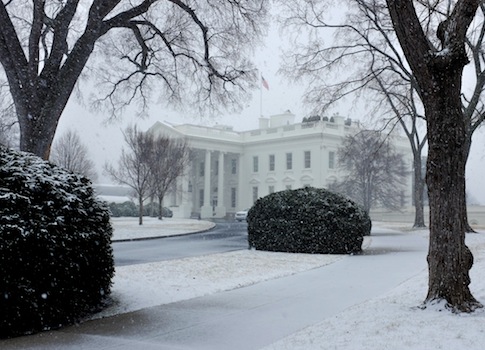The majority of people who will directly benefit from the minimum wage hike are not actually living in poverty or supporting families, as President Barack Obama has asserted, according to a presentation prepared by the White House.
The White House prepared a slideshow dated February 12, 2014 ahead of a Wednesday speech on the minimum wage touting the economic benefits of a 40 percent increase to the minimum wage. The president’s own data demonstrates that the majority of the wage increase will benefit those making well over the poverty line.
The slideshow shows that 22 percent of earners who will benefit from the hike come from households that bring in more than $75,000 per year—50 percent higher than the median household income in 2013.
Another 32 percent of beneficiaries come from households that earn between $35,000 and $75,000 annually, placing them at least 48 percent above the federal poverty line for a family of four.
A December report from the American Action forum found that teenagers represent 37 percent of all minimum wage workers and concluded that the wage increase could actually end up increasing inequality.
"Those families with teenagers earning minimum wage had average incomes of $103,964.30, well above the 2011 national average of $75,203.78," the report found.
That is not the image that the White House has sought to cultivate of minimum wage earners.
Obama and other supporters of a wage hike have focused the debate on the fact that a full time worker making the current $7.25 hourly wage will earn about $15,000 per year.
"I’m going to keep pushing until we get a higher minimum wage for hard-working Americans across the entire country. It will be good for our economy. It will be good for our families," he said in a December speech about the economy. He reiterated that message during the January State of the Union address and has pledged to make the minimum wage a top priority in the run up to 2014 elections.
The White House’s own chart shows that nearly 75 percent of all the beneficiaries of a minimum wage increase are either teenagers or adults with no children.
"This chart proves once and for all how hollow the ‘single mother or father with kids’ argument in favor of a higher minimum wage really is. Even the White House acknowledges that this group represents just 10 percent of beneficiaries," said Michael Saltsman, research director at the Employment Policies Institute.
"We shouldn’t ignore their plight, and that’s why we have policies like the Earned Income Tax Credit. But to use them as the example for a higher minimum wage, as so many on the left do, is clearly disingenuous."
Saltsman said the president’s data corresponds with numerous studies about the demographics of minimum wage earners. Efforts to raise the minimum wage may benefit upper income families using minimum wage work as supplemental income, but it will hurt those living in poverty by shrinking the labor market, he said.
"Economists have long understood that raising the minimum wage is an ineffective way to reduce poverty, and the White House unintentionally proved the point today," Saltsman said. "With nearly 60% of poor individuals without a job, and a majority of minimum wage workers in households far above the poverty line, it’s foolish to expect that $10.10 wage mandate will measurably help the poor."
